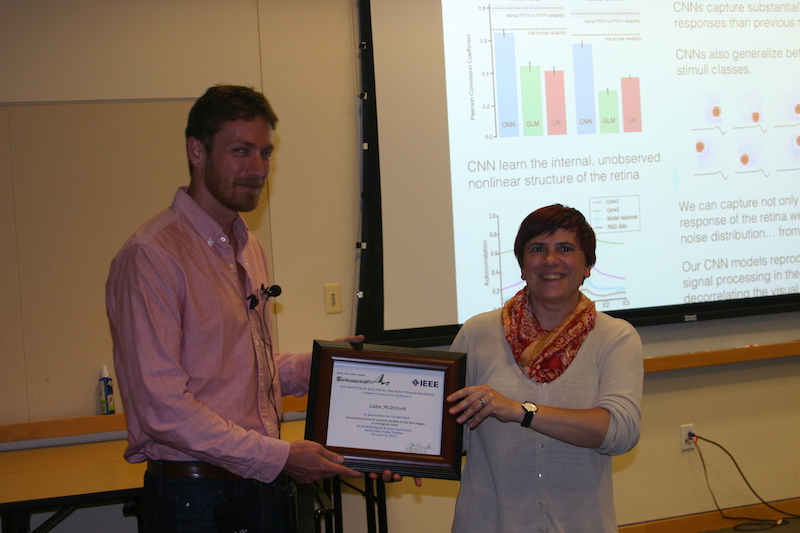|
Click here for see the full list of upcoming events.
Thursday, June 16, 2016
Convolutional neural network models of the first stages in biological vision
This event is hosted/sponsored by IEEE SPS Chapter and co-sponsored by IEEE EMBS & SSCS Chapters.
Speakers:
Lane McIntosh
Neurosciences PhD candidate, Stanford University
Location:
AMD Commons C-6/7/8, 991 Stewart Dr., Sunnyvale, CA (map or Google Maps)
Schedule:
6:30pm: Networking/Light Dinner
7:00pm: Announcements
7:05pm: Presentation
8:15pm: Adjourn
Cost:
Free. Donation accepted for food.
Abstract:
In order to understand how and why biological vision pathways perform particular computations, we must first know what they do. The first stages of biological vision occur in the retina, and consist of cascaded nonlinear processes like synaptic transmission and spiking dynamics that compress the entire visual scene into the sparse responses of only one million spiking cells. The ubiquity of these dynamic, nonlinear computations in the retina have presented significant obstacles to the goal of learning accurate computational models of circuit responses to natural stimuli from neural recordings. In this talk I will discuss recent work demonstrating that convolutional neural networks (CNNs) are considerably more accurate at capturing retinal responses to held-out natural scenes stimuli than pre-existing published models of the retina. Moreover, we find CNNs generalize significantly better across classes of stimuli they were not trained on. Remarkably, analysis of these CNNs reveals internal units selective for visual features on the same small spatial scale as the main excitatory interneurons of the retina, bipolar cells. Overall, this work demonstrates the power of CNNs to not only accurately capture sensory circuit responses to natural scenes, but also uncover the circuit's internal structure and function.
Biography:
Lane McIntosh is a fourth year Neurosciences PhD candidate at Stanford University. His research focuses on uncovering general principles of information transmission in the early stages of vision, with the goal of using these insights to improve computer vision. Lane completed an M.A. in Mathematics at the University of Hawaii, where he was an NSF fellow, and a B.A. in Computational Neuroscience from the University of Chicago.
Slides (PDF: 33MB)

Subscribe to future announcements: link
|